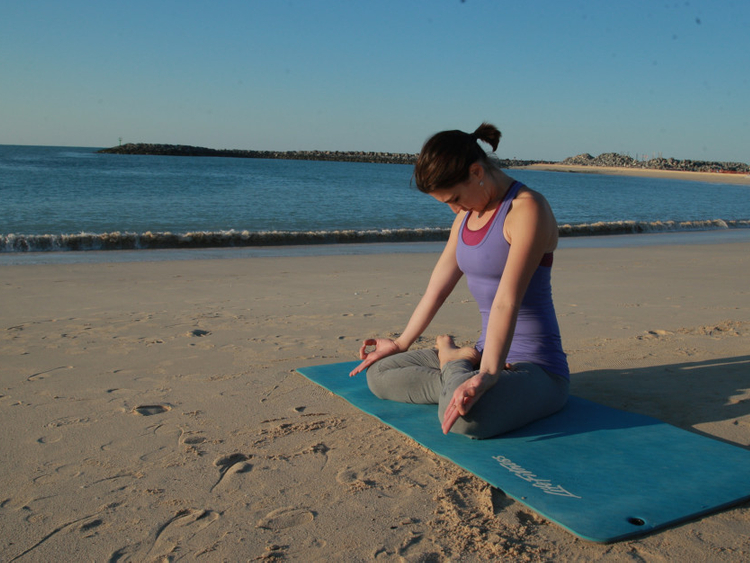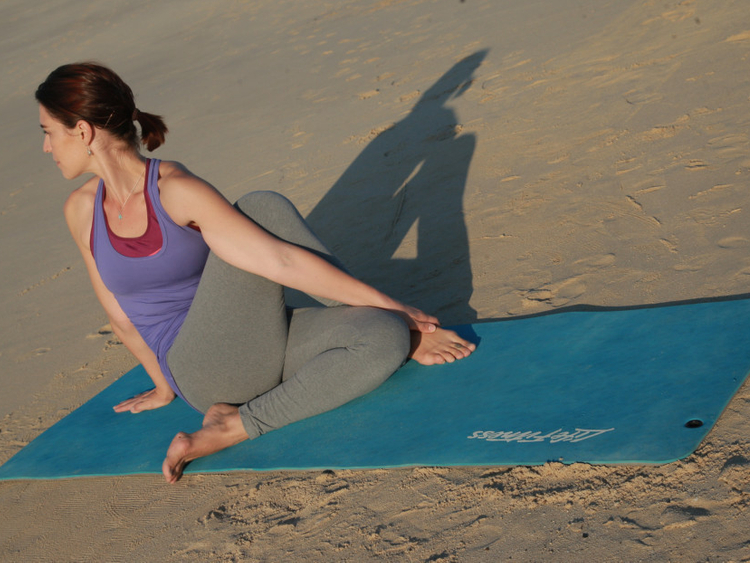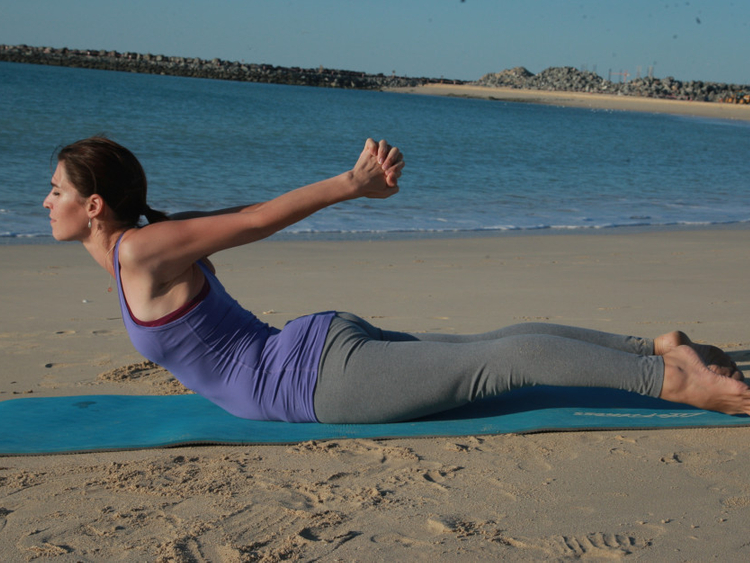
Yoga has devised techniques to regulate the breath and alternate parameters such as heart and metabolic rate; oxygen consumption, temperature of the body, etc. Extensive research has been carried out to assess the impact of pranayama or breath-regulation on cellular repair, anxiety, depression, cancer and ageing. Pranayama or breath regulation can cleanse, revitalise and increase the prana or life force in your system. Regular practise of pranayama is known to optimise health and assist in Kayakalp or age reversal.
The mechanism of breath
When you inhale, the diaphragm and the intercostal muscles contract while the chest is pulled up. When you exhale, the diaphragm and intercostal muscles relax; chest is pulled down pushing air out of the lungs. Respiration is the process of exchange of gases in the lungs. On inhalation, air enters through the nostrils and passes through the trachea to reach the lungs. There are microscopic air sacs in the lungs called alveoli. Each alveolus is surrounded by blood vessels. The alveoli and blood vessels exchange carbon dioxide and oxygen. The haemoglobin present in blood combines with oxygen to form oxy-haemoglobin. This blood is then carried to the tissues in your body providing them with a fresh supply and revitalising the organs.
Right breathing can help increase oxygen absorption in the body. This influences metabolic rate which helps in losing or maintaining your weight. It also helps arrest ageing at a cellular level by controlling cellular damage and facilitating repair. This boosts your organ health, cardiovascular system, nervous activity and increases your energy levels tremendously. Thus your lung capacity and the ability to breathe right play a huge role in keeping you healthy and youthful.
Yoga divides the mechanism of breath into three parts: purak (inhalation), rechak (exhalation) and kumbhak (retention). It also defines a specific ratio of purak, kumbhak and rechak for the various breathing techniques.
The connection between breath and mind
Normally, you take 12-18 breaths per minute. It is possible to bring the number of breaths down to 2-6 per minute using the techniques of pranayama. One of the ways to achieve this is to simply become aware of your breath. Breath influences the mental body deeply. It goes through the ups and downs of your emotional life with you. The easiest way to understand this is to notice your breath when you are angry or stressed. When you are angry your breath rate (number of breaths per minute) increases rapidly. When you are stressed beyond a point, you exhale forcefully with a “hu” sound. When you are trying to accomplish a task which requires immense mental concentration, you tend to hold your breath. Yogic wisdom states that when the breath is controlled it is possible to control the mind.
Pranayama holds the secret to the fountain of youth
The ancient science of yoga has observed that breathing right can enhance your life span. We’ve just seen how working on your breath affects the brain. Physical changes are also visible in your skin texture, hair growth and sparkling eyes. Research in the elderly has shown that practising pranayama can improve motor and cognitive skills, boost memory power and slow down ageing to an extent. Research has also been done on the effect of pranayama on the autonomic nervous system (ANS). ANS has two drives and controls the involuntary actions or functions of the organs. With regular pranayama, it will switch from sympathetic drive (flight or fight response) to parasympathetic drive (rest and digest response). In the parasympathetic drive, stress levels drop, immunity gets a boost, decision making and creativity are enhanced. It also makes you feel peaceful. Stress, anxiety, depression can be eliminated from your life. You can achieve vibrant health, happiness and youthful energy which are the goals of Kayakalp or age-reversal.
TIP OF THE WEEK: An easy technique to reduce stress and energise instantly is to inhale deeply and hold your breath for 10-15 seconds. Then exhale forcefully through the mouth. Repeat this 10-15 times.
NEXT WEEK: Maintaining a flexible spine for a vigorous life.
PRACTICE OF THE WEEK:
Sarpasana
Ardhmatsyendrasana
Sahaj (easy) pranayama
This is an interactive series, in which we will bring you practical tips on daily living, inspired by the vision of yoga. Write in to tabloid@gulfnews.com with your questions and doubts regarding enhancing your lifestyle through yoga. For more information, call 800-YOGA (9642) or log on to artisticyoga.com















